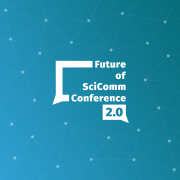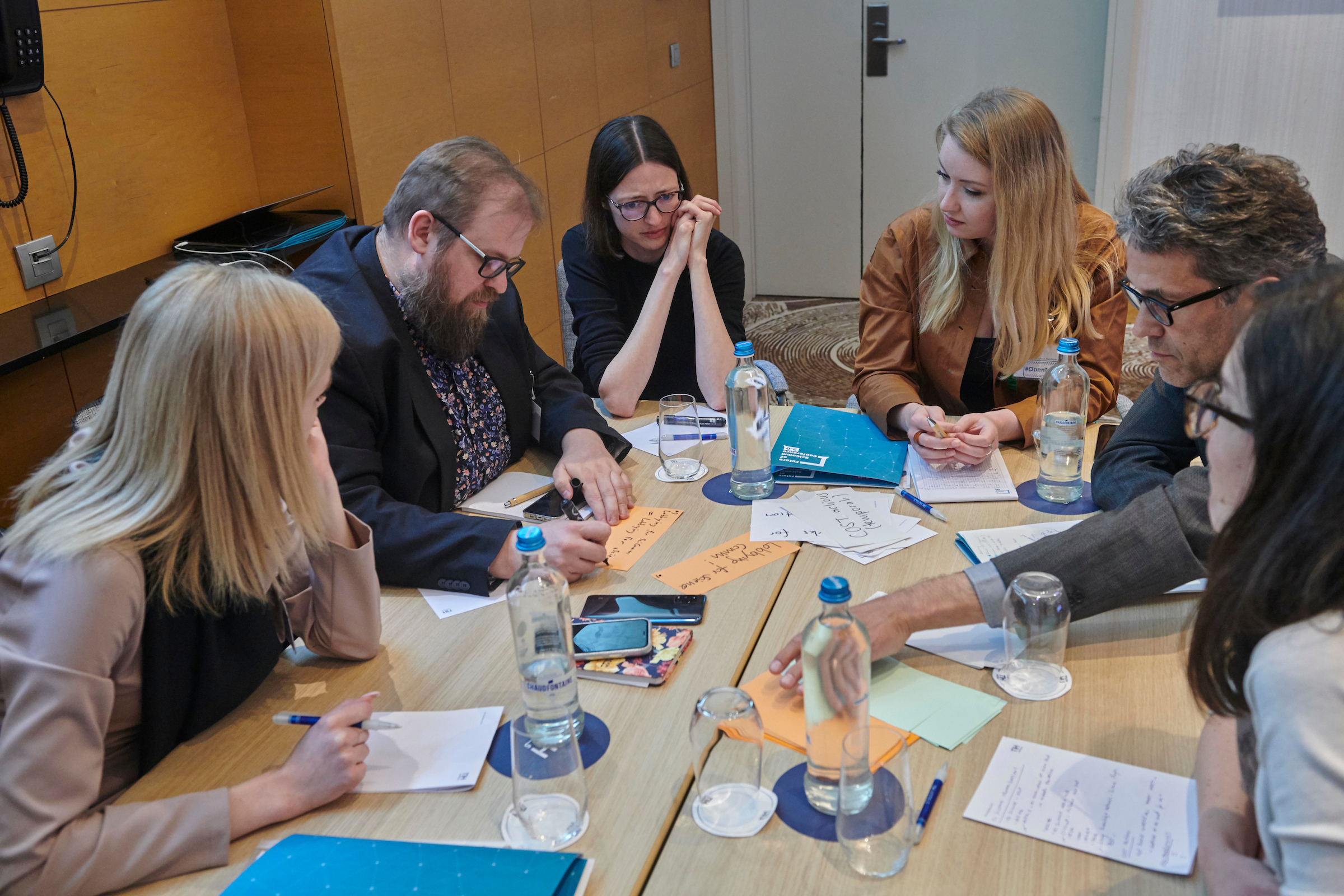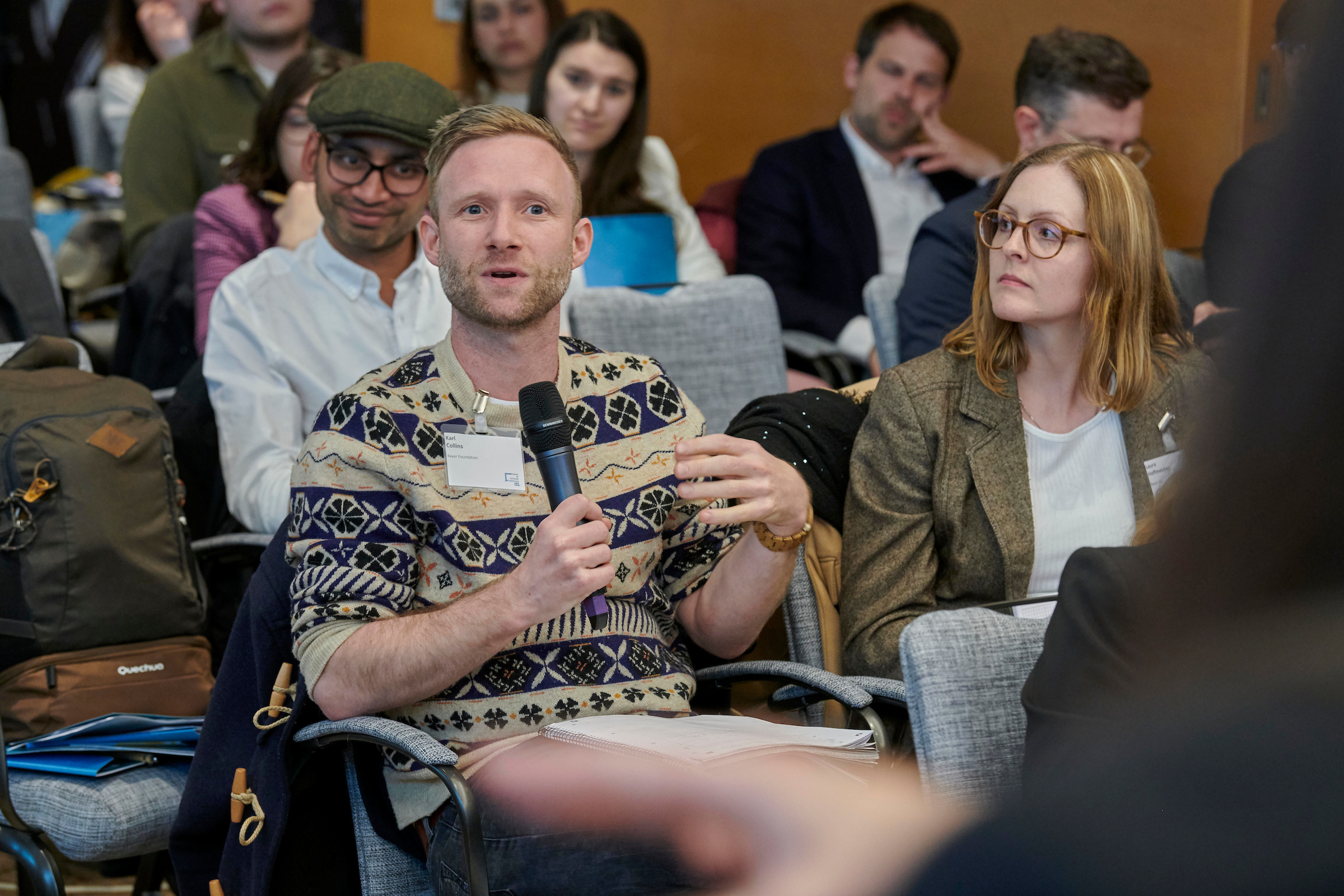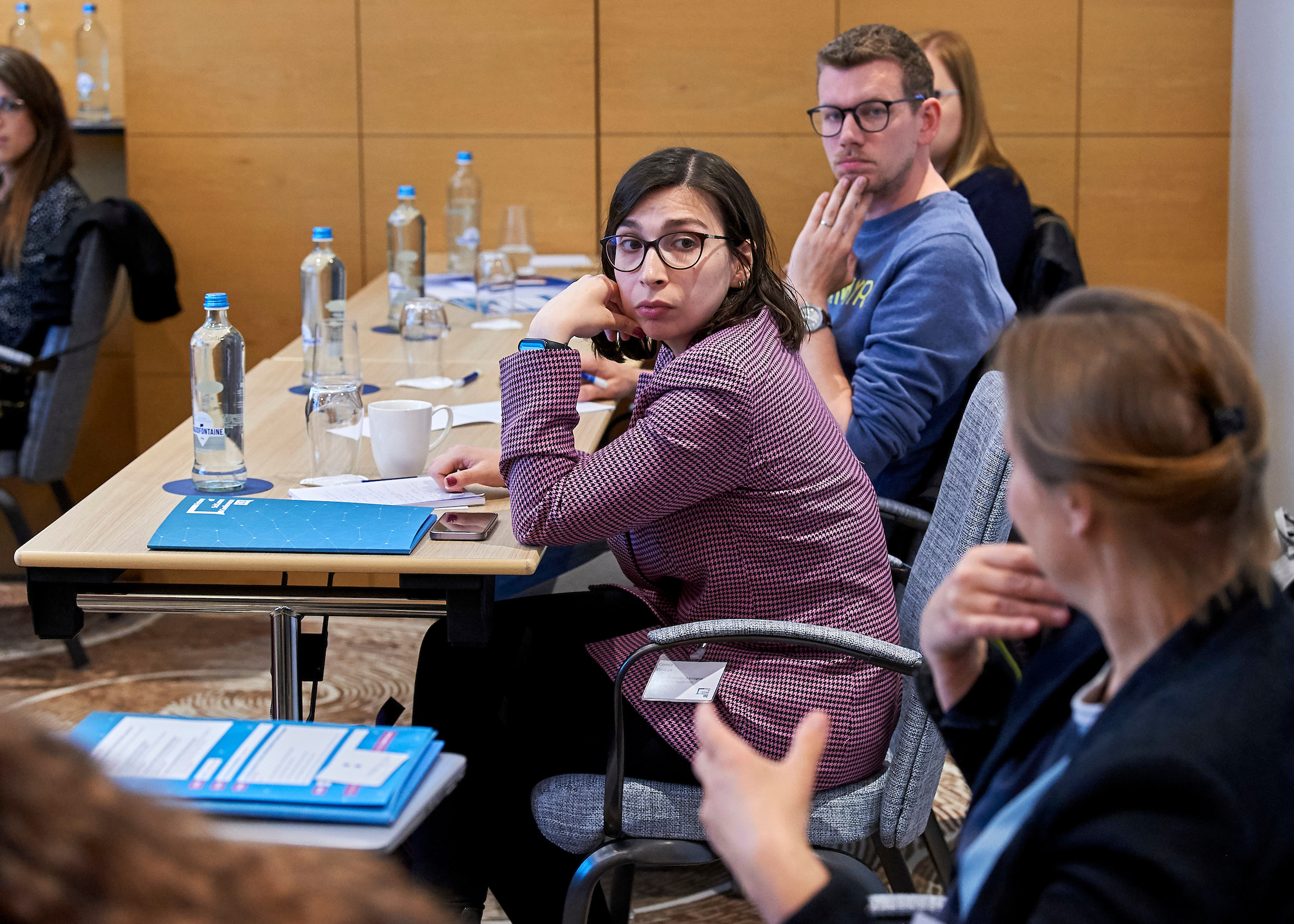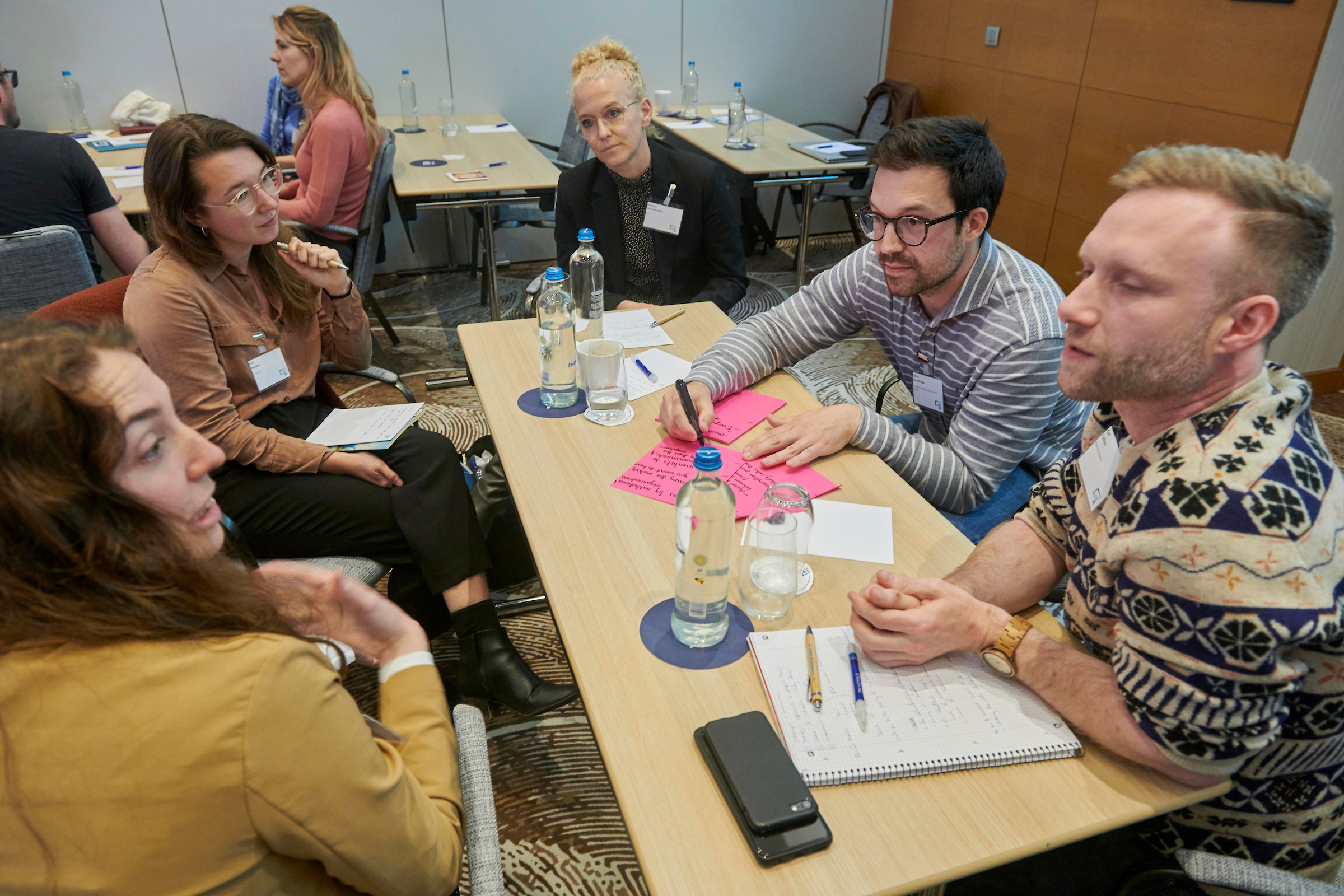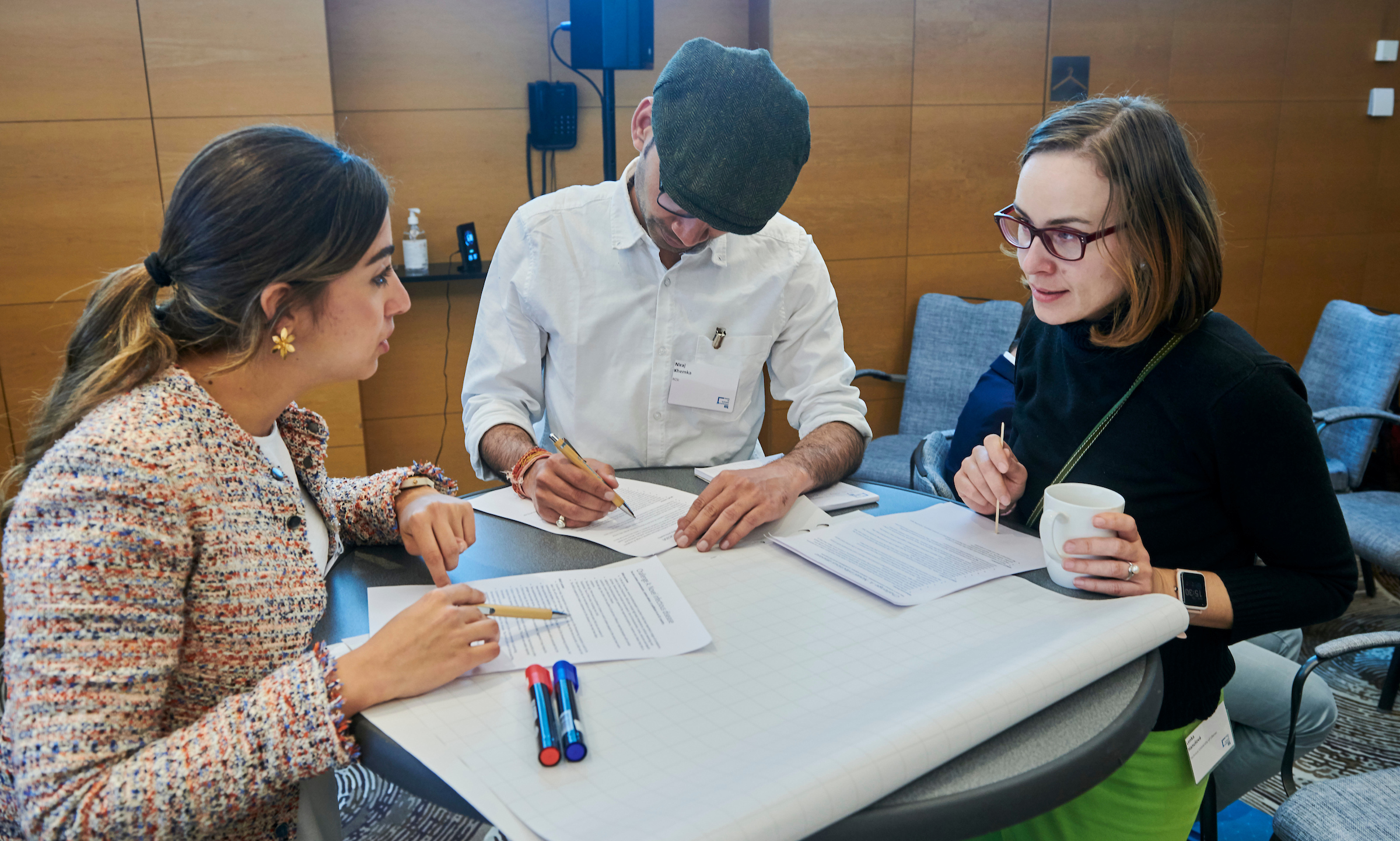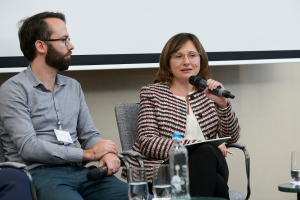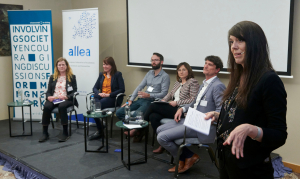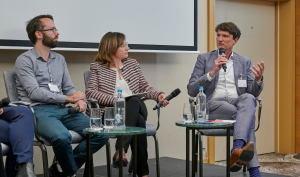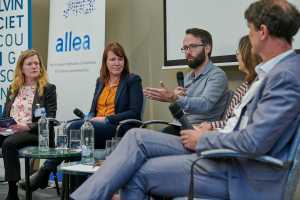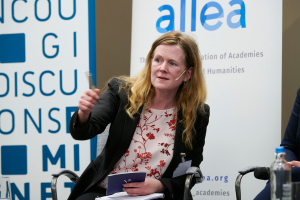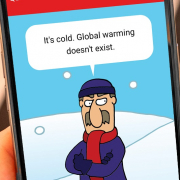Public Attitudes and Trust in Europe – Analysing Country Level Differences
PERITIA invites researchers, policymakers, and media representatives to the presentation of results from survey data on public attitudes towards national governments, science, and media across six European countries: Germany, the UK, Ireland, Poland, Italy, and Norway.
The Future of Science Communication Conference: Bringing Science Communicators and Researchers Together
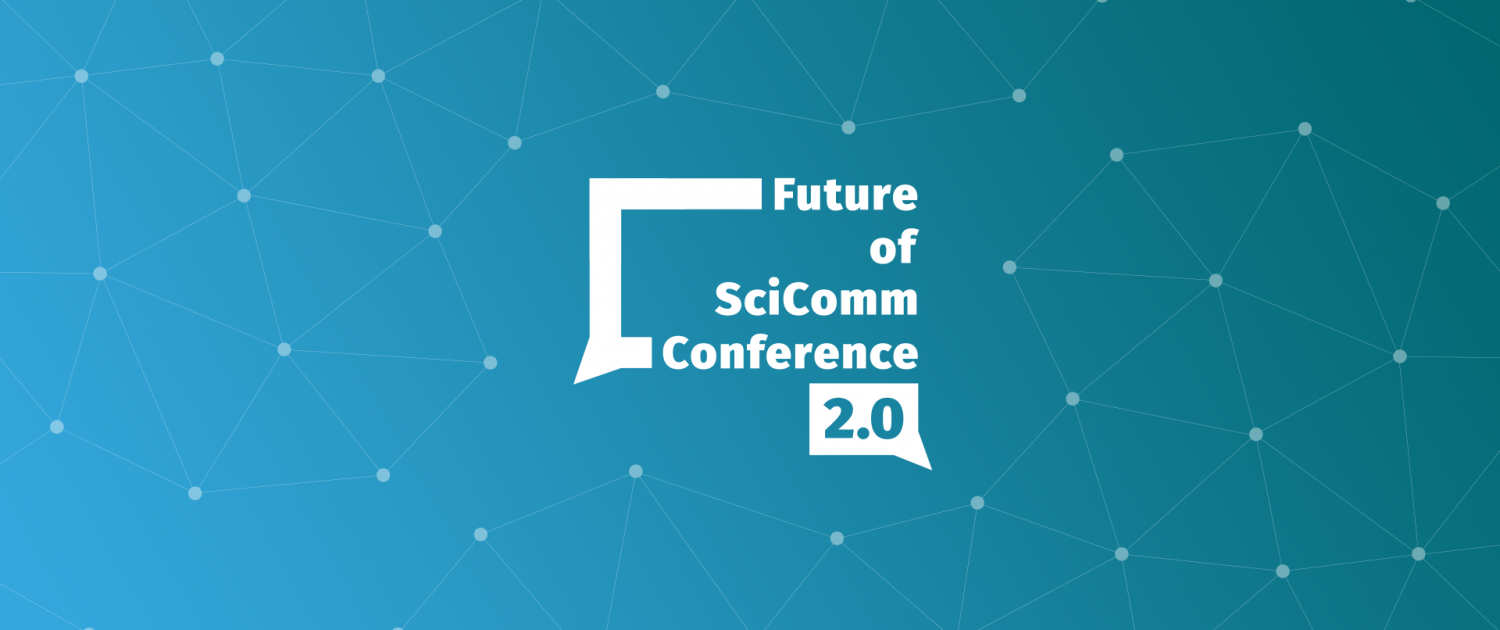
ALLEA and Wissenschaft im Dialog hosted the second Future of Science Communication Conference (FSCC 2.0) in Brussels, which was attended by academics, policymakers, and practitioners to learn from renowned experts in the burgeoning field.
On 26 April, academics, policymakers, and practitioners gathered for the second Future of Science Communication Conference (FSCC 2.0), co-organised by ALLEA and Wissenschaft im Dialog, the organisation for science communication in Germany and funded by the German Federal Ministry of Education and Research, in Brussels to discuss the latest ideas and questions on how to effectively communicate science in the age of social media and the increased access to information and knowledge, no longer mediated by experts in Academia and the Media.
FSCC 2.0 was designed as a follow-up event to the Future of Science Communication Conference that was held virtually in June 2021 and attended by over 1,000 participants. It brought together the science communication community in Europe to discuss relevant topics such as communicating science in the presence of uncertainty, dealing with disinformation, creating open dialogue with the public, and developing institutions and structures for a strategic (re-)orientation of Science Communication in Europe, among others.

Welcome remarks by Birte Fähnrich (German Federal Ministry of Education and Research) Photo© 2022 HorstWagner.eu
Welcome remarks by Birte Fähnrich from the German Federal Ministry of Education and Research, Antonio Loprieno, President of ALLEA, and Markus Weißkopf, managing director of Wissenschaft im Dialog, were followed by three impulse talks, parallel workshops, and a final panel discussion..
Lessons from the pandemic
Virologist and head of the committee of experts advising the Belgian Government on its Covid-19 strategy, Erika Vlieghe (University of Antwerp) presented some lessons learned about effective science advice during the pandemic, and shared her insights on the future of communicating science during a crisis. “We need to ensure that science and politics remain separate; and we need to communicate the science in a way that doesn’t allow for misunderstanding or misuse,” cautioned Dr Vlieghe.

Erika Vlieghe presents lessons for science communicators from the pandemic Photo © 2022 HorstWagner.eu
Massimiano Bucchi (University of Trento) then went on to share his insights into the (inaccurate) stereotypes of the public found in the minds and discourse of policymakers and experts, and their consequences for effective science communication. “Unfortunately, a representation of the public as hostile, sceptical, and ignorant is still widespread among policy makers and experts, supporting a paternalistic and ultimately authoritarian vision of science communication and of science in society. As the literature from the past two decades clearly shows, this representation largely reflects unfounded prejudices,” said Prof Bucchi, one of the leading scholars researching science communication and director of the International Master programme SCICOMM.
In his virtual address to the Brussels audience, Prof Bucchi called for the shift of focus from fighting misinformation and “fake news” to the “quality” of science communication; in particular how to improve, incentivise, reward, and distinguish it from low-quality, ad-hoc, and poorly focused science communication.
The final impulse talk by Uwe Steger, head of public relations at the University of Innsbruck, focused on the future challenges for science communication. Mr Steger called for the incorporation of science mediation work into curricula and the early stages of academics’ careers. Among other suggestions, Mr Steger emphasised the need for increased and systematic funding for research on and training in science communication.
Interactive Workshops
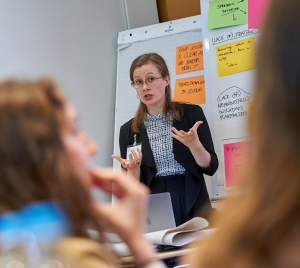 The talks sparked lively discussions and were followed by interactive workshops on four important issues: Communicating Global Challenges: Learning from COVID-Communication and Climate Change; Fake News & Disinformation and the Consequences for the Science-(Communication)-Community; Evidence-based Practice, Impact and Evaluation of SciComm; and Networks and Institutional Structures of European SciComm.
The talks sparked lively discussions and were followed by interactive workshops on four important issues: Communicating Global Challenges: Learning from COVID-Communication and Climate Change; Fake News & Disinformation and the Consequences for the Science-(Communication)-Community; Evidence-based Practice, Impact and Evaluation of SciComm; and Networks and Institutional Structures of European SciComm.
Among others, the workshops debated such questions as “How can we embed science communication within curricula to broaden the scope for the field?” “How to clarify responsibilities for science communicators?” “What is the role of transparency in effective science communication?” “Can we create a common language when discussing the “impact” and “quality” of science communication that we can share across borders?”.
- Workshops at FSCC 2.0
Photo © 2022 HorstWagner.eu
Institutionalising Science Communication
FSCC 2.0 concluded with a hybrid panel discussion on “How to Institutionalise SciComm in Europe?”, which can be watched on YouTube. The panel included David Lodder, communications officer at the European Commission for Research & Innovation, Ionica Smeets, chair of Leiden University’s research group Science Communication and Society, Svetla Tanova, coordinator of the European Science Media Hub, and Markus Weißkopf. It was moderated by Maria Lindholm (Sweden’s Research and Innovation Office in Brussels),
The panel discussed issues such as future challenges for SciComm at the European level, innovative projects in the field today, the question of funding, and ideal institutional landscapes for the field and the paths to get there. Some insights from the panel are highlighted below:
- David Lodder discussed the challenge of communicating complex ideas in a strategic way to a target audience: “I think there are three challenges – trust, strategy, and cooperation – which have to work together. The Eurobarometer survey shows that the public trusts scientists more than policymakers or journalists when it comes to science, so it is very important to empower researchers to communicate. But there needs to be strategy behind the communication. And finally, cooperation with experts in communication to know how best to reach the right audience is crucial.”
- Markus Weißkopf reiterated the need for recognition of science communication work by the scientific community as it could be a powerful motivator for scientists to engage in this essential activity. Elaborating on how to achieve such recognition, he added that “Role models are important. Senior scientists can be influential in motivating younger peers to pursue science communication. And we can initiate prizes for science communication, but we also need to recognise science communication activities as valid work experience when hiring candidates so that it is valued as a skill.”
- Ionica Smeets emphasised that science communication does not need to be performed by every scientist. “I think it is dangerous to talk about broadening careers and ask all scientists to do all aspects; what we see is that young researchers are very motivated to do science communication but there is very little support,” said Dr Smeets. She added that training and funding young researchers to engage in science communication would be relatively inexpensive and would have a big impact.
- Svetla Tanova called for greater exchange of ideas and best-practices between actors, and across borders, in particular with countries and communities who are less privileged. She added that rather than the top-down imposition of standards by EU institutions, science communication conduct and convention should be built from the bottom up by the scientific community.
Photo © 2022 HorstWagner.eu
Watch the full discussion by clicking on the link below.
More documentation of FSCC 2.0 will be published in the coming months, including a report on the policy recommendations from the conference. If you want to receive future updates, please subscribe to the ALLEA newsletter.
“When We Explain the Facts, We Should Also Explain How Misinformation Can Distort Our Facts”
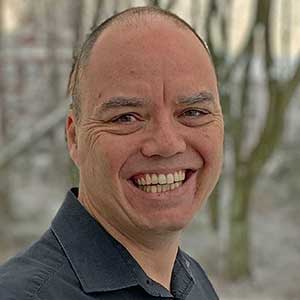
Dr John Cook (Monash University) is an award-winning scientist and cartoonist who fights climate misinformation with humour and critical thinking. He is also the creative mind behind the Cranky Uncle, a “male, older, white, and politically conservative” caricature of those who are dismissive of climate science according to psychological research. His acclaimed book “Cranky Uncle vs. Climate Change” and game app expose misleading techniques of science denial and offer tools to build public resilience against misinformation. His work has not only been used in schools, but he has recently developed a project to counter climate disinformation with Facebook, jointly with other researchers.
He will be one of the contributors to the workshop “Using experiments to fight science disinformation online: an evidence-based guide” at the Future of Science Communication Conference organised by ALLEA and Wissenschaft im Dialog on 24-25 June. Ahead of this conference, he offers some tips and insights on how to combat misinformation in the science communication and education fields.
Question: “Cranky Uncle vs Climate Change” is the name of your book and the game you developed which brings together climate science and dealing with misinformation. Where does this name come from and what is your tip as a first step to dealing with a “cranky uncle” in our real personal lives?
John Cook: Psychological research finds that people who are dismissive of climate science are more likely to be male, older, white, and politically conservative. Cranky Uncle is the embodiment of that demographic type. And anecdotally, almost everyone has a family member, friend or colleague who captures that “cranky uncle” personality type. My first tip in dealing with your own cranky uncle is to recognise that the odds of actually changing their mind is very small, so don’t get frustrated if you don’t make much headway in your conversations. That doesn’t mean that we shouldn’t engage with them however. Often the beneficiaries of such conversations are not our cranky uncle but everyone else witnessing the exchange. That’s the purpose of the Cranky Uncle book and game – not necessarily changing our cranky uncle’s mind but inoculating everyone else against his misinformation.
“The purpose of the Cranky Uncle book and game is not necessarily changing our cranky uncle’s mind but inoculating everyone else against his misinformation”.
Q.: You wrote a paper on “which counters misinformation better: facts or logic?” concluding that logic outperformed facts in your study. How can we translate these findings for practitioners of science communication?
J.C.: The key thing that science communicators need to realise is facts are vulnerable to being cancelled out by misinformation. When people are confronted with conflicting pieces of information and they have no way of resolving the conflict, the risk is they disengage and don’t internalize our factual explanation. Our research found that if we explain the facts to people then they afterwards encounter misinformation casting doubt on the facts, the misinformation cancels out the facts. However, logic-based corrections that explain how the misinformation misleads is not vulnerable in the same way – the positive effect from logic-based corrections are not affected by misinformation. What I recommend is when we explain the facts, we also explain how misinformation can distort our facts. This is like wrapping bubble wrap around our facts to keep them safe as we send them out into a world filled with misinformation.
“If we explain the facts to people then they afterwards encounter misinformation casting doubt on the facts, the misinformation cancels out the facts.”
Q.: The Cranky Uncle game has found users all over the world, but can it be used equally effectively everywhere, or can cultural differences in communication and science communication influence how to handle misinformation?
J.C.: Currently the Cranky Uncle game is only available in English so obviously that does make it less relevant to the non-English speaking world. Even so, I was surprised to see the game being picked up in a number of European countries and hope to see that trend increase once the game is available in other languages. We are currently in the process of translating the game into German – our first test of the translation procedure. Once that process is worked out, we’ll begin translating into other languages (we’ve had volunteers approach us to translate the game into around a dozen languages and more volunteers are always welcome). There are some language difficulties in translating parts of the game from English. For example, we talk about the ambiguity fallacy, where words with double meanings can be exploited in order to mislead people. Unfortunately, words with double meanings vary across different languages so we’ve been exploring creative ways to tackle this issue. We’ve also discussed adding new cartoons for new languages. For example, a cartoon of Neal deGrasse Tyson features in the current game, as an example of a famous astrophysicist from the United States. We’re exploring incorporating the German equivalent of Neal deGrasse Tyson – an astrophysicist who is well-known in Germany.
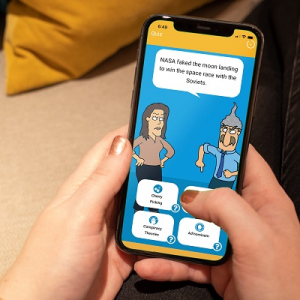
Q.: For our Future of Science Communication Conference, we have also focused on battling science disinformation. Have you observed any trends in SciComm practice in recent years which have been particularly successful?
J.C.: The approach of using technology – particularly digital games – has exploded in recent years. Misinformation is nimble and adapts to new technologies and online platforms with disturbing rapidity. That means that science communicators need to be adaptive and innovative in our responses to misinformation. We’re dealing with a complex, ubiquitious problem which requires interdisciplinary solutions that can scale up to meet the huge challenge. Scientists need to be working with practitioners in other fields such as game and app development to develop technological solutions that can reach large proportions of the public. I am excited to see that this is already happening with a number of clever and engaging digital games springing up in response to the problem of misinformation.
“Misinformation is nimble and adapts to new technologies and online platforms with disturbing rapidity. That means that science communicators need to be adaptive and innovative in our responses to misinformation.”
Q.: You recently published a teachers’ guide for your game, and in the past you have authored textbooks for university students on climate change facts and denial. What have you learned from teachers who use your game in their classroom?
J.C.: It was enthusiasm from educators early in the game development that made me realize the classroom would likely be the venue where the game would make its biggest impact. Teachers are crying out for interactive resources that engage their students while strengthening their critical thinking skills. The other thing that struck me in my interaction with teachers has been their creativity in combining the Cranky Uncle game with classroom activities. One example is a delightful classroom assignment where students were assigned to write an email to their teacher, explaining using multiple logical fallacies why the teacher shouldn’t fail the student despite the fact that they hadn’t studied. This assignment is an elegant example of active inoculation, where students get inoculated against misleading fallacies by learning how to use the techniques of science denial. It is also an excellent opportunity for the students to practise humour and creativity, with some hilarious assignments!
“Teachers are crying out for interactive resources that engage their students while strengthening their critical thinking skills.”
Q.: Schools, universities, teachers seem to be natural partners to tackle science misinformation. In your experience, are they willing to join this “fight”? Is there enough understanding of the problem and/or resources to do this?
J.C.: On the one hand, a number of schools and universities have eagerly embraced the opportunity to teach critical thinking and build resilience against misinformation. On the other hand, there are many more schools and teachers that are already so time-crunched, they struggle to fit extra content into their classes. It is important that more resources be developed that make it easier for teachers to incorporate these kinds of activities in their classes, while meeting their curriculum requirements. We also need to build awareness among educators of the powerful benefits of “misconception-based learning” (also known as agnotology-based learning) – teaching students by directly addressing misconceptions and misinformation. This doesn’t need to be seen as negative or combative – rather, it’s an opportunity to combine the teaching of facts with critical thinking (or from a psychological perspective, combining fact-based and logic-based communication). This type of education shows stronger learning gains which last longer than standard lessons – it’s a powerful form of education.
“We need to build awareness among educators of the powerful benefits of “misconception-based learning” (also known as agnotology-based learning) – teaching students by directly addressing misconceptions and misinformation.”



